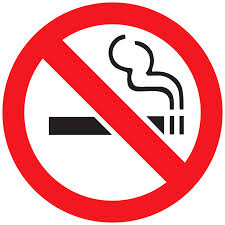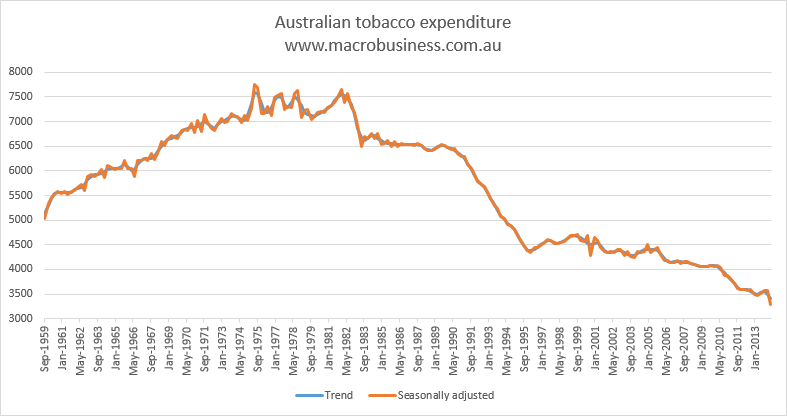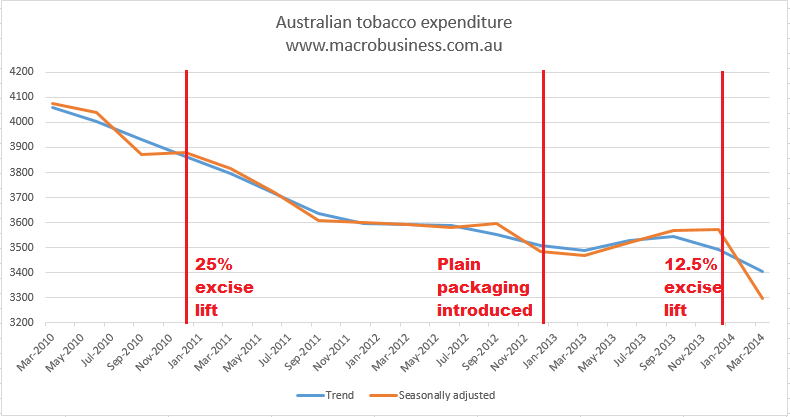
The Kouk is back and waging a war on an ideological alliance of big tobacco, The Australian, and the Institute of Public Affairs.
For background, those who haven’t seen it should take a few minutes to watch the ABC’s MediaWatch take on the kerfuffle.
Since then, The Australian has continued the assault with articles by Judith Sloan and, over the weekend, an ad hominem editoral as well as from Henry Ergas:
…basic economics shows that instead of lowering tobacco consumption, plain packaging may increase it, and the risk of cancer with it.
The reasons are straightforward. Before plain packaging, at least some consumers were willing to pay a premium to consume, and be seen to consume, the higher quality brands. Moreover, each brand had its own, expensively cultivated, image and loyal clientele. With rivalry between brands focused on “look and feel”, the result was to mute price competition in the industry, thereby raising cigarette prices and lowering demand.
For example, in the TV series Mad Men, Don Draper’s major client, the iconic brand Lucky Strike, had no incentive to cut its margins: lower prices wouldn’t shift the consumer who would “walk a mile for a Camel”, but would slash revenues from its own customer base. As the same logic applied to Camel, Lucky Strike could safely set its prices high, confident Camel would follow. And with the top end brands all acting similarly, there was a price umbrella under which the lower quality brands could also earn a good living.
But plain packaging changes that dynamic. Consumers are scarcely likely to pay the premium that funds Draper’s martinis if the label no longer proclaims their good taste. Rather, once the pack is purely generic, even rusted-on loyalists will shop around. Rivalry to snare those increasingly footloose buyers then triggers discounting; and with large numbers of consumers also shifting from higher quality to lower quality products, the average prices paid will fall by even more than the discounting alone would suggest.
As a result, by lowering prices, plain packaging may actually boost consumption, compared to what would have happened without it. And with teenagers’ demand for cigarettes about three times as price responsive as that of adults, the perverse consequence may be to enlarge the base of younger smokers Roxon pledged her policy would shrink.
May boost prices, sure. And may not. Depends if price is more effective than other cultural influences over consumer behaviour like “cool”. The argument is pretty theoretical anyway given the tobacco excise increases are dramatically increasing the price.
Here is the ABS data on aggregate spend, over the long term:

And more recently:

So, who is right in this debate? Is plain packaging working and does it matter. Well, in seasonally adjusted terms, spending did increase year-on-year to December 2013 so one could cherry-pick an argument to say it isn’t working. But, over the same period in trend terms aggregate spending fell and trend is the more useful statistical measure. If you add another quarter then sales are crashing, after another tax hike.
The Treasury last week released more qualitative data supporting the case that the policy is effective:
Tobacco consumption
The Commonwealth Treasury has further advised that tobacco clearances (including excise and customs duty) fell by 3.4% in 2013 relative to 2012 when tobacco plain packaging was introduced.
Clearances are an indicator of tobacco volumes in the Australian market.
Neither of these tells us which policy is working, though prima facie it looks like tax increases are probably having a more powerful effect, but it’s impossible to isolate plain packaging as a single policy at this aggregate data level. Treasury also released qualitative data:
Tobacco sales data are not publicly available.
Recent figures released by the Australian Bureau of Statistics show that total consumption of tobacco and cigarettes in the March quarter 2014 is the lowest ever recorded, as measured by estimated expenditure on tobacco products i.e. $5.135 billion in September 1959, $3.508 billion in December 2012 and $3.405 billion in March 2014. See Table 8 at 5206.0 – Australian National Accounts: National Income, Expenditure and Product, Mar 2014
The Commonwealth Treasury has further advised that tobacco clearances (including excise and customs duty) fell by 3.4% in 2013 relative to 2012 when tobacco plain packaging was introduced.
In April 2013, the CEO of a major tobacco company noted a decline in tobacco product sales:
“As I’m looking at Asia Pacific, I should also mention Australia, we’ve had the first six months of the plain pack environment in Australia. We’ve seen the market decline roughly 2% to 3%, so maybe not as bad as we might have anticipated.” Transcript of Imperial Tobacco half-year 2013 results – Interview with Alison Cooper, CEO, and Bob Dyrbus, FD
It looks like a reasonable circumstantial case to me but at the end of the day does it matter all that much? There is a war on smoking and it’s winning. It’s fair enough that the state do what it can to prevent smoking given it picks up the healthcare costs. And targeting the “cool” of smoking is a smart strategy. The same argument can be extended to other products too. That’s economic rationalism as much as it is nanny-statism.
In the name of disclosure let me say that I feel for smokers. I used to be one and would still be if it did not kill you. It’s a tremendous pleasure that non-smokers really don’t understand. I’m sure if you asked them if they prefer to be targeted by price hikes or plain packages they’d elect the latter!
Over-simplification and data cherry-picking appears to be happening on both sides of the debate but at the end of the day the perceived (or real) axis of evil constituting the tobacco-funded Institute of Public Affairs, the Labor-hating Australian newspaper and the tobacco industry is so self-defeatingly egregious that I’d recommend all three back away from an argument they are very clearly going to lose. And on that note, I’ll offer the last word to the Kouk, who is doing a good job of maintaining the rage:
The editorial of The Australian is a “black is white”, “up is down” and “the earth is flat” type…
Ain’t that the truth.

